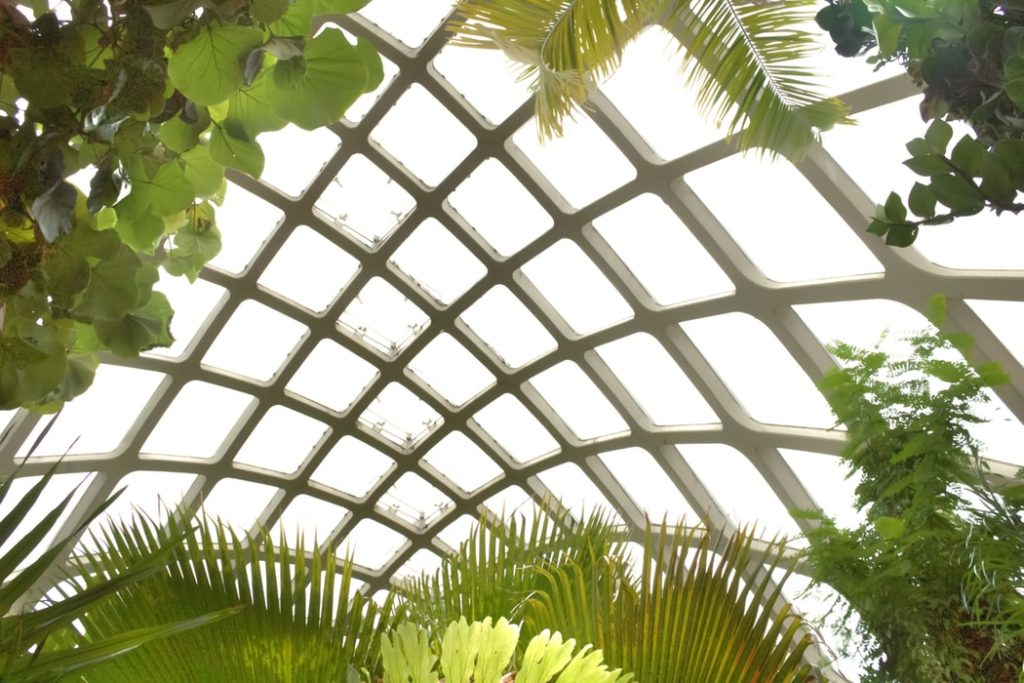As a world in planetary crisis, we have now entered a critical decade. Some experts have even gone so far as to say that 2020 will be the year in which the climate fight is won or lost.
From the fires in Amazonia, Indonesia and Australia, July being crowned as Earth’s Hottest Month on Record, the massive hurricanes that hit Louisiana and The Bahamas, to widespread environmental protests and the school strikes around the world. 2019 saw many questioning the global systems as environmental disasters and social disruption held a mirror to humanity’s inability to protect both the environment and people.
At the same time, 2019 saw a rise in some leaders stepping up, as well as several new sustainability trends and initiatives sweeping across industries including the green building industry.
At the beginning of last year, our team put together their predictions of 2019’s green building trends.
These included:
- An increase in the development of net zero carbon buildings.
- A higher need for both existing and new buildings to be certified green
- Advancements of technological developments within the built environment, leading to more “smart buildings” ( smart building is a structure that makes use of automated processes to optimise a building’s performance through controlling operations such as heating, cooling, ventilation, lighting, security and other systems)
- Designing and constructing buildings so that they operate on a resilient level against extreme weather pattern changes.
- A rise in eco-friendly initiatives, for example the the anti-single-use-movement.
- An increased interest in alternative building materials.
So what does 2020 have in store for the green building industry? We asked our team again what they thought are some of the emerging (or ongoing) green building trends for 2020, along with discussing key green building drivers, opportunities, and challenges:
1. BUILDINGS ARE GOING INDEPENDENT
In the wake of the Western Cape drought and the current, ongoing Eskom electricity crisis, South Africans are getting increasingly tired of their reliance on the failing government institutions.
We’re seeing homes, companies and buildings slowly becoming more independent by installing devices to capture water or solar PV installations, as the interest to take matters into their own hands (by going off the grid) increases. This will be seen through greater uptake of small scale embedded generation in homes and businesses and therefore reduced pressure placed on the national grid.
2. A FOCUS ON INDIVIDUAL DIFFERENCE
2020 will see green building trends shift from only serving the interests of larger developments who can afford the extra add-ons, to smaller scale interventions with shorter pay-back periods to serve the broader masses and to once again, decrease our reliance on national grids and water sources.
We’re seeing an uptake in smaller, “low hanging fruit” initiatives that individuals can apply to their homes and work spaces in an effort to make an individualised difference.
3. A RISE IN SUSTAINABLE PRECINCTS
Sustainable precincts are becoming more popular and could be the key to sustaining cities of the future.
These precincts generate their own power, recycle water, address waste and have high aspirations for social outcomes such as affordable housing and public transport.
According to Martin Smith, a Technical Director for Buildings at Aurecon “A well-designed precinct environment makes a variety of behaviour choices more convenient. So, for example, you can conveniently walk from home to access entertainment, or commercial activities. “Meaning your impact on the environment is far lighter.”
4. A RISE IN NET ZERO
In 2019, we saw a massive rise in Net Zero projects which seek to completely neutralise or positively redress their carbon emissions, water consumption, solid waste to landfill and/or their impacts on ecology.
Now, achieving Net Zero and the technology needed to do so is becoming easier and more accessible as the building industry is focusing more on consumption, efficiency, renewable energy, and/or offsetting, in the case of energy use to remain consistent with the 4 categories of net zero listed above. With evolving construction technologies, renewable energy systems and academic research, we see Net Zero energy becoming the standard for building design and operation.
The C40 commitments attest to this, as Cape Town, Johannesburg, Tshwane and Ethekwini have committed to all new buildings within their metros to be Net Zero carbon (i.e. energy) by 2030 and all existing buildings to be net zero carbon by 2050. Uptake will have to be driven, incentivised, researched and regulated soonest to achieve these ambitious but necessary goals. This also falls in line with the World Green Building Council’s advancing net zero campaign and goals.
5. GOING GREEN FROM THE GROUND UP.
Net Zero interventions are being introduced into the base build specifications of a building, and we’re seeing it more often. Before even thinking of the pursuit of a Green Star certification or any related certification, building owners and developers are incorporating best practice initiatives as part of the standard base build specification.
Through initially incorporating clever design aspects like lowered glazing ratios, that filters invisible infrared heat from the sun, buildings will not only be more sustainable, but also save on capital and operational cost from the get-go. With the implementation of these sustainable initiatives it shows that building owners and developers alike are starting to think long term about the environmental impact of their buildings and projects.
6. ONGOING SUSTAINABLE OPERATION
Sustainability and efficiency is no longer ending after design and construction. Design now offers the foundation for sustainable operation. More and more building users realise that they ultimately carry the cost of operating and maintaining a building and are becoming prepared to pay a small additional capital premium in design phase and go the extra effort to be able to maintain and operate a building sustainably. Ongoing sustainable operation of buildings will save users money by having more productive and happy occupants, lower maintenance costs, and consuming less electricity and water.
Building users are realising that: ‘only that what you measure, you can improve’. Clever metering of building electricity, commissioning of building systems, and energy audits will be some of the ways to ensure that sustainable operations are maintained over the long run.
7. ALTERNATIVE BUILDING MATERIALS
2019 saw a massive rise in the use and experimentation of alternative building materials and construction techniques and we expect it to increase in 2020 as building professionals are becoming better acquainted with the properties and benefits of different eco-friendly building materials.
According to a survey by Sell House Fast which included 582 architects, engineers and construction (AEC) professionals, it is believed that the use of bamboo will see the greatest increase in 2020. 74% of the group said that this light-weight alternative to heavy imported building materials will be seen more frequently within the property industry this year.
After that, 69% expect straw bales to have a strong inclusion in construction projects scheduled in 2020, followed by timbercrete (61%). At the other end of the scale only 44% think hempcrete (made from hemp fibre, water and lime) will become widely used and cork (made from the tree bark of cork oak) even less so at 38%.
While these trends remain predictions based on what we as Ecolution team members have observed in the green building industry, we believe that each of these factors will experience heightened awareness and development in the coming year(s), with emphasis on sustainable alternatives not only in building materials but also everyday products and functions in response to the global environmental crises.
For more information, or for assistance with your sustainability or green building initiatives, please contact us at .


